Dario Malchiodi
Support Vector Based Anomaly Detection in Federated Learning
Jul 04, 2024Abstract:Anomaly detection plays a crucial role in various domains, from cybersecurity to industrial systems. However, traditional centralized approaches often encounter challenges related to data privacy. In this context, Federated Learning emerges as a promising solution. This work introduces two innovative algorithms--Ensemble SVDD and Support Vector Election--that leverage Support Vector Machines for anomaly detection in a federated setting. In comparison with the Neural Networks typically used in within Federated Learning, these new algorithms emerge as potential alternatives, as they can operate effectively with small datasets and incur lower computational costs. The novel algorithms are tested in various distributed system configurations, yielding promising initial results that pave the way for further investigation.
A Critical Analysis of Classifier Selection in Learned Bloom Filters
Nov 28, 2022Abstract:Learned Bloom Filters, i.e., models induced from data via machine learning techniques and solving the approximate set membership problem, have recently been introduced with the aim of enhancing the performance of standard Bloom Filters, with special focus on space occupancy. Unlike in the classical case, the "complexity" of the data used to build the filter might heavily impact on its performance. Therefore, here we propose the first in-depth analysis, to the best of our knowledge, for the performance assessment of a given Learned Bloom Filter, in conjunction with a given classifier, on a dataset of a given classification complexity. Indeed, we propose a novel methodology, supported by software, for designing, analyzing and implementing Learned Bloom Filters in function of specific constraints on their multi-criteria nature (that is, constraints involving space efficiency, false positive rate, and reject time). Our experiments show that the proposed methodology and the supporting software are valid and useful: we find out that only two classifiers have desirable properties in relation to problems with different data complexity, and, interestingly, none of them has been considered so far in the literature. We also experimentally show that the Sandwiched variant of Learned Bloom filters is the most robust to data complexity and classifier performance variability, as well as those usually having smaller reject times. The software can be readily used to test new Learned Bloom Filter proposals, which can be compared with the best ones identified here.
On the Choice of General Purpose Classifiers in Learned Bloom Filters: An Initial Analysis Within Basic Filters
Dec 13, 2021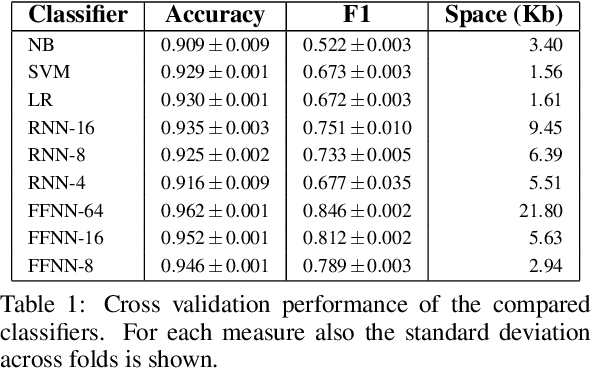
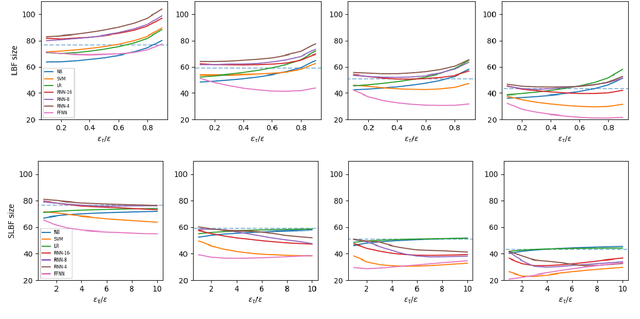

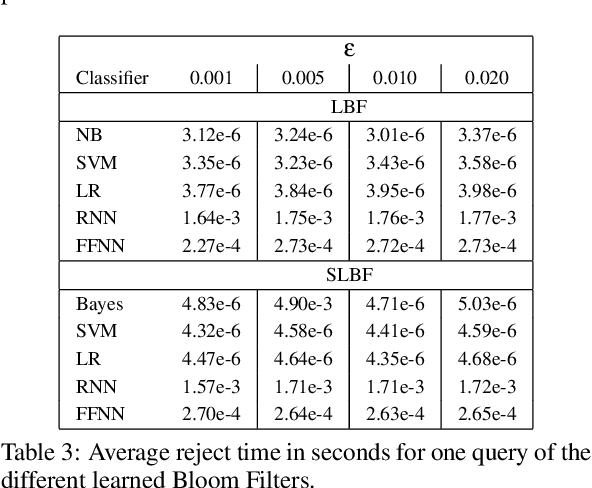
Abstract:Bloom Filters are a fundamental and pervasive data structure. Within the growing area of Learned Data Structures, several Learned versions of Bloom Filters have been considered, yielding advantages over classic Filters. Each of them uses a classifier, which is the Learned part of the data structure. Although it has a central role in those new filters, and its space footprint as well as classification time may affect the performance of the Learned Filter, no systematic study of which specific classifier to use in which circumstances is available. We report progress in this area here, providing also initial guidelines on which classifier to choose among five classic classification paradigms.
Compact representations of convolutional neural networks via weight pruning and quantization
Aug 28, 2021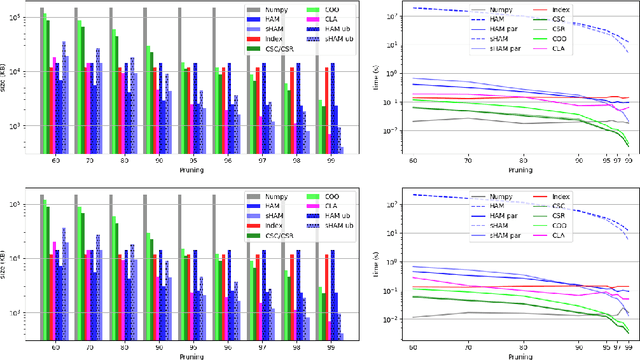

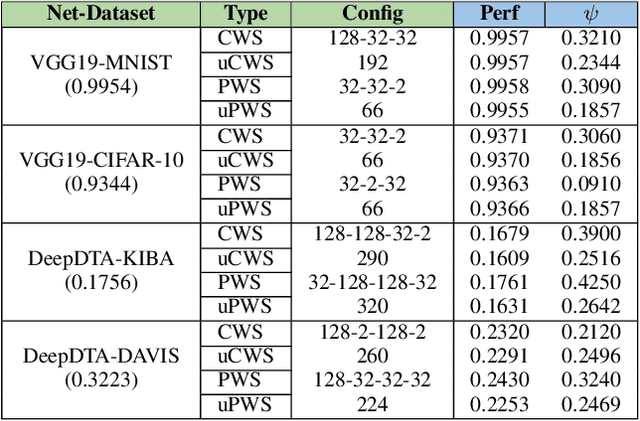
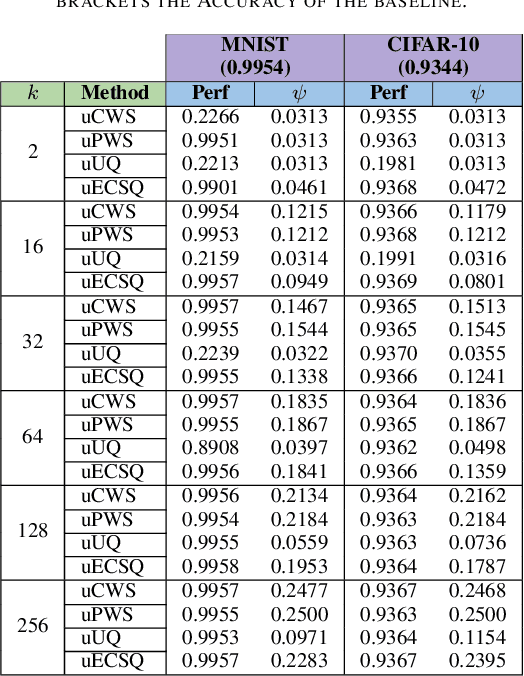
Abstract:The state-of-the-art performance for several real-world problems is currently reached by convolutional neural networks (CNN). Such learning models exploit recent results in the field of deep learning, typically leading to highly performing, yet very large neural networks with (at least) millions of parameters. As a result, the deployment of such models is not possible when only small amounts of RAM are available, or in general within resource-limited platforms, and strategies to compress CNNs became thus of paramount importance. In this paper we propose a novel lossless storage format for CNNs based on source coding and leveraging both weight pruning and quantization. We theoretically derive the space upper bounds for the proposed structures, showing their relationship with both sparsity and quantization levels of the weight matrices. Both compression rates and excution times have been tested against reference methods for matrix compression, and an empirical evaluation of state-of-the-art quantization schemes based on weight sharing is also discussed, to assess their impact on the performance when applied to both convolutional and fully connected layers. On four benchmarks for classification and regression problems and comparing to the baseline pre-trained uncompressed network, we achieved a reduction of space occupancy up to 0.6% on fully connected layers and 5.44% on the whole network, while performing at least as competitive as the baseline.
Compression strategies and space-conscious representations for deep neural networks
Jul 15, 2020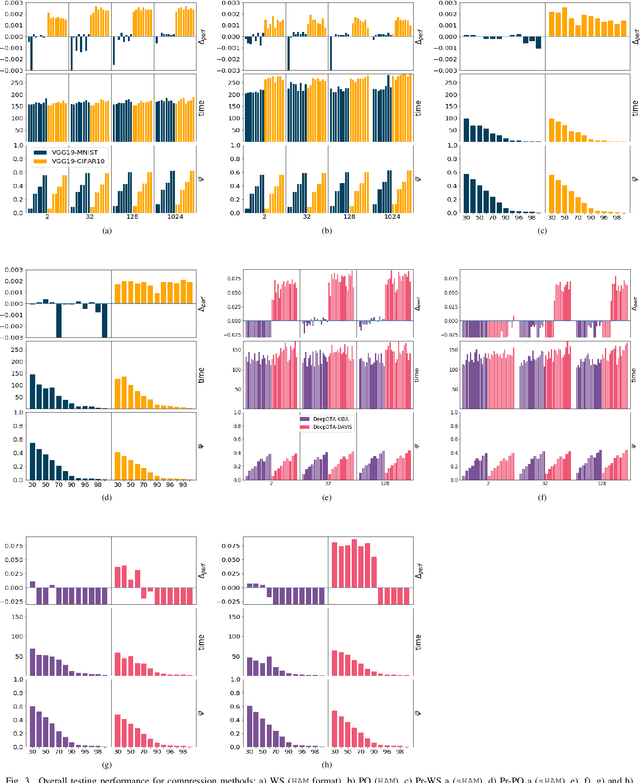

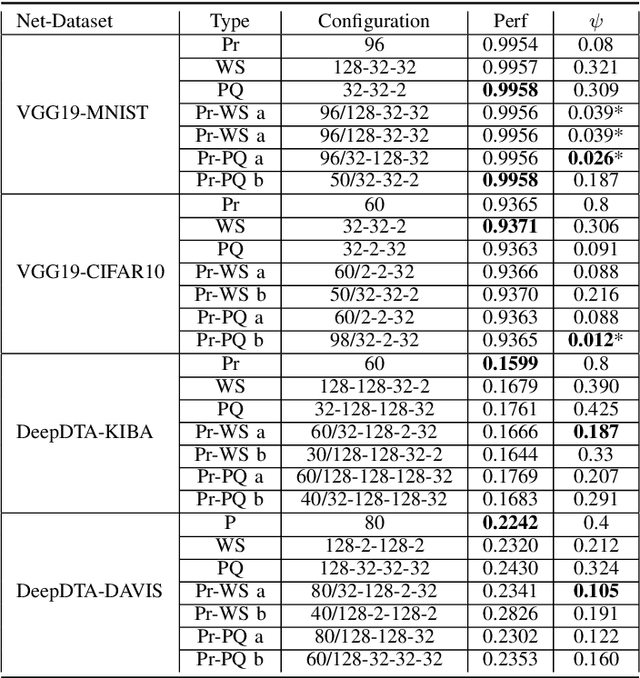
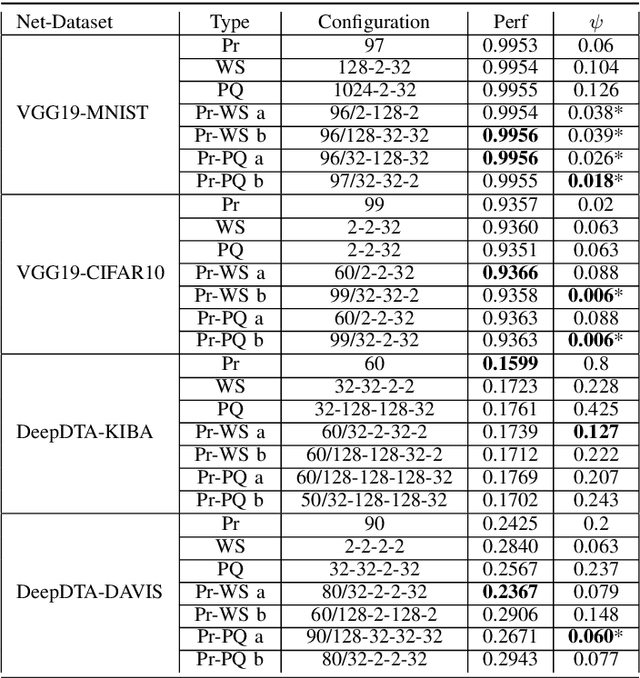
Abstract:Recent advances in deep learning have made available large, powerful convolutional neural networks (CNN) with state-of-the-art performance in several real-world applications. Unfortunately, these large-sized models have millions of parameters, thus they are not deployable on resource-limited platforms (e.g. where RAM is limited). Compression of CNNs thereby becomes a critical problem to achieve memory-efficient and possibly computationally faster model representations. In this paper, we investigate the impact of lossy compression of CNNs by weight pruning and quantization, and lossless weight matrix representations based on source coding. We tested several combinations of these techniques on four benchmark datasets for classification and regression problems, achieving compression rates up to $165$ times, while preserving or improving the model performance.
 Add to Chrome
Add to Chrome Add to Firefox
Add to Firefox Add to Edge
Add to Edge